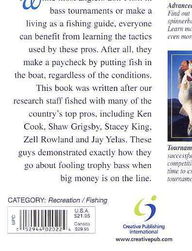Introduction: Wild fishing, with its serene atmosphere and the thrill of the catch, is a cherished pastime for many anglers. Whether you're a seasoned pro or a beginner, mastering the art of wild fishing requires a combination of the right equipment and practical techniques. One of the most crucial tools in your fishing arsenal is the fishing rod. In this article, we will delve into the essentials of carrying your fishing rod, as well as some top-notch fishing techniques to help you hook that big one.
Section 1: Choosing the Right Fishing Rod 1.1 Material: The choice of material for your fishing rod can significantly impact its performance. Common materials include graphite, fiberglass, and composite. Graphite rods are lightweight and sensitive, perfect for detecting subtle bites. Fiberglass rods are more durable and forgiving, suitable for heavy-duty fishing. Composites offer a balance between the two.
2 Length: The length of your fishing rod should be determined by the type of fishing you plan to do. Longer rods are ideal for casting over long distances, while shorter rods are better for close-quarters fishing.
3 Action: The action of a fishing rod refers to how it bends when a load is applied. Fast-action rods are excellent for casting and flipping, while slow-action rods are better for bottom fishing and detecting subtle bites.
4 Power: The power of a fishing rod refers to its resistance to bending. Light-power rods are suitable for light lures and small fish, while heavy-power rods are designed for larger fish and heavier lures.
Section 2: Carrying Your Fishing Rod 2.1 Rod Holder: A rod holder is a convenient way to carry your fishing rod while you're not using it. Choose a holder that securely holds your rod and is easy to attach to your boat or vehicle.
2 Rod Bag: A rod bag is essential for protecting your fishing rod from damage during transport. Ensure that the bag is large enough to accommodate your rod and any additional equipment you might be carrying.
3 Carrying Position: When carrying your fishing rod, always hold it with the tip pointing down to prevent unnecessary stress on the rod's joints.
Section 3: Basic Fishing Techniques 3.1 Casting: Casting is the process of throwing your lure or bait into the water. To cast effectively, hold the rod at a 45-degree angle, and use a smooth, continuous motion to launch your lure.
2 Bait Presentation: The way you present your bait or lure can make or break your fishing trip. Experiment with different retrieves, such as the slow roll, the twitch, or the stop-and-go technique, to see what works best for the fish you're targeting.
3 Reading the Water: Understanding the currents, depth, and structure of the water you're fishing can help you choose the right spot and technique. Observe the surface of the water for signs of fish activity, such as ripples or bubbles.
4 Lure Selection: The right lure can make all the difference. Consider the type of fish you're targeting and the conditions you're fishing in when selecting your lure. Soft plastics, spinnerbaits, and crankbaits are popular choices for a variety of fish species.

Section 4: Advanced Techniques 4.1 Fly Fishing: Fly fishing is a unique technique that requires a different type of rod, line, and lure. Learn the basics of fly casting and how to tie and use flies to attract fish.
2 Jigging: Jigging involves repeatedly lifting and dropping a weighted lure to attract fish. This technique is particularly effective for targeting bottom-dwelling fish.
3 Trolling: Trolling involves slowly dragging a lure or bait behind a boat. This method is great for covering large areas and can be effective for a variety of fish species.
Conclusion: Wild fishing is an enjoyable and rewarding activity that can be enhanced by mastering the art of carrying and using a fishing rod. By choosing the right rod, learning proper carrying techniques, and honing your fishing skills, you'll be well on your way to catching more fish and enjoying your time on the water. Remember, practice makes perfect, so don't be afraid to experiment with different techniques and lures to find what works best for you. Happy fishing!












